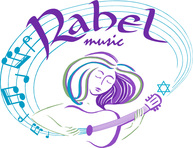Contact Rahel to enjoy the benefits of individually tailored sound healing and therapeutic music sessions.
A Sound Environment

The Music Practitioner creates an environment conducive to relaxation, healing and transition through the provision of live music at the bedside of individual patients or to groups of patients receiving care.
Music is individually tailored; it is provided in a way that is designed to meet the needs of the specific situation for each individual or group. The Music Practitioner works as part of the clinical team, a caregiving support team, or in cooperation with a patient's family.
Music is individually tailored; it is provided in a way that is designed to meet the needs of the specific situation for each individual or group. The Music Practitioner works as part of the clinical team, a caregiving support team, or in cooperation with a patient's family.
Music Practitioners play unobtrusive, soothing music as a service, not an entertainment. By focusing on a single patient at a time, the practitioner can provide music that meets the patient’s needs in the moment, creating a nurturing environment that facilitates (self) healing, emotional release, and relief from pain, stress or tension.
Music Practitioners provide one-on-one palliative care to the ill and the dying in hospitals, hospices, bedsides of the dying, homes, and other clinical settings to facilitate transition; and in nursing homes and private homes; delivery rooms and special care nurseries; intensive care, burn, Alzheimer’s and other forms of Dementia; ambulatory surgery units; psychiatric wards; dialysis, radiation and chemotherapy centers; operating rooms; and massage and acupuncture clinics, and more!
It is not necessary for the patient to interact physically or even verbally with the Music Practitioner. Patients under anesthesia, and even unconscious and comatose patients can benefit from live therapeutic music.
Music Practitioners provide one-on-one palliative care to the ill and the dying in hospitals, hospices, bedsides of the dying, homes, and other clinical settings to facilitate transition; and in nursing homes and private homes; delivery rooms and special care nurseries; intensive care, burn, Alzheimer’s and other forms of Dementia; ambulatory surgery units; psychiatric wards; dialysis, radiation and chemotherapy centers; operating rooms; and massage and acupuncture clinics, and more!
It is not necessary for the patient to interact physically or even verbally with the Music Practitioner. Patients under anesthesia, and even unconscious and comatose patients can benefit from live therapeutic music.